The construction of the Gümüşsuyu Building began in 1840 during the reign of Ottoman Sultan Mahmud II, with the aim of meeting the housing needs of the unmarried workers employed at the Tüfekhane-i Amire, which was located in Dolmabahçe and served as the state’s light weapon production center. During its construction, some changes were made to the interior, and it was transformed into a military barracks. The wooden building, completed in 1843 by Armenian architect Garabet Amira Balyan, was then used as the Gümüşsuyu Barracks.
In 1857, Sultan Abdülmecid requested the renovation of the dilapidated Gümüşsuyu Barracks, which was intended for use by the Hademe-i Hassa (the royal attendants) and the Muzika-i Hümayun (the Imperial Ottoman Band), who served at Dolmabahçe Palace. As a result, in 1862, the main structure of the Gümüşsuyu Barracks was converted into a Kâgire (a type of building material), and it was completed by architect Sarkis Balyan during the reign of Sultan Abdülaziz.
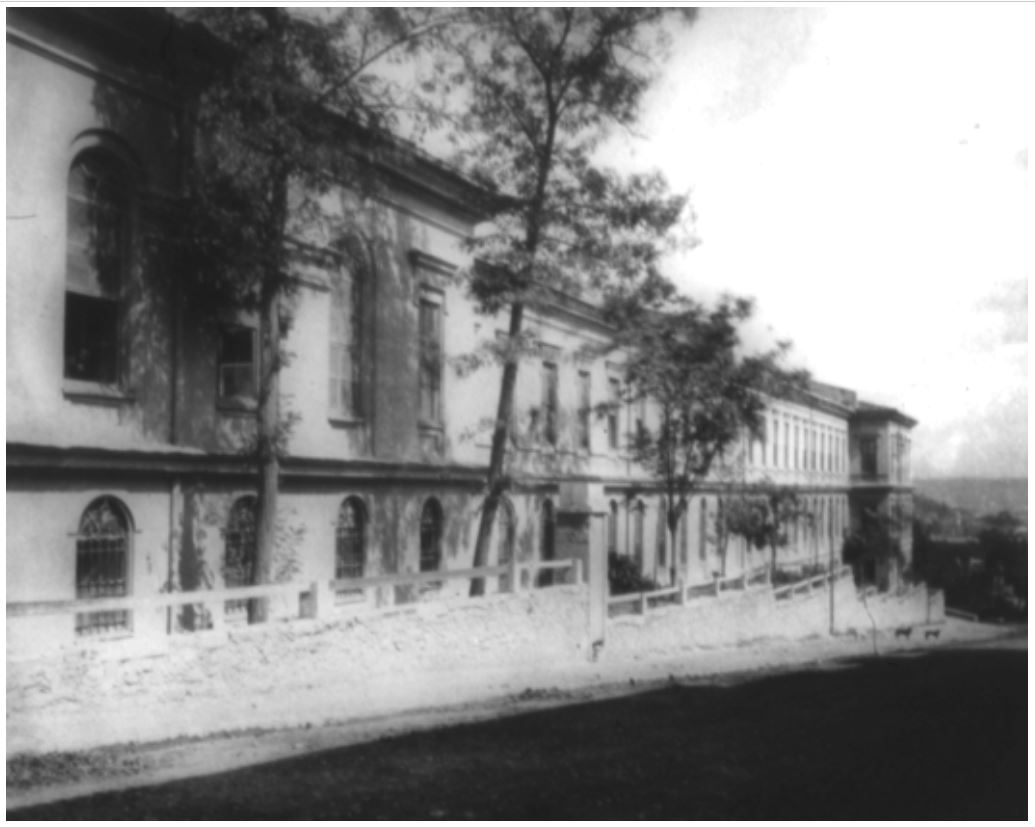
A photo of Gümüşsuyu Barracks from its early years.
During the Ottoman period, the Gümüşsuyu Barracks hosted the Muzika-i Hümayun, which was established to train musicians for the palace band and orchestra, as well as to provide Turkish music education. In this regard, it holds the distinction of being one of the first buildings of what is now the Presidential Symphony Orchestra. Additionally, the Gümüşsuyu Barracks was used for the training of the Hademe-i Hassa unit, which was responsible for performance and ceremony duties among the palace attendants. In later years, a section of the barracks was allocated to the Tulumbacılar Birliği (the Fire Brigade), which was responsible for fire-fighting duties, and the Süvari Birliği (Cavalry Unit), which served as the palace’s mounted protection unit. The area, which is now used as a gymnasium and outdoor space, was originally designated in 1863 as stables for the Süvari Birliği.
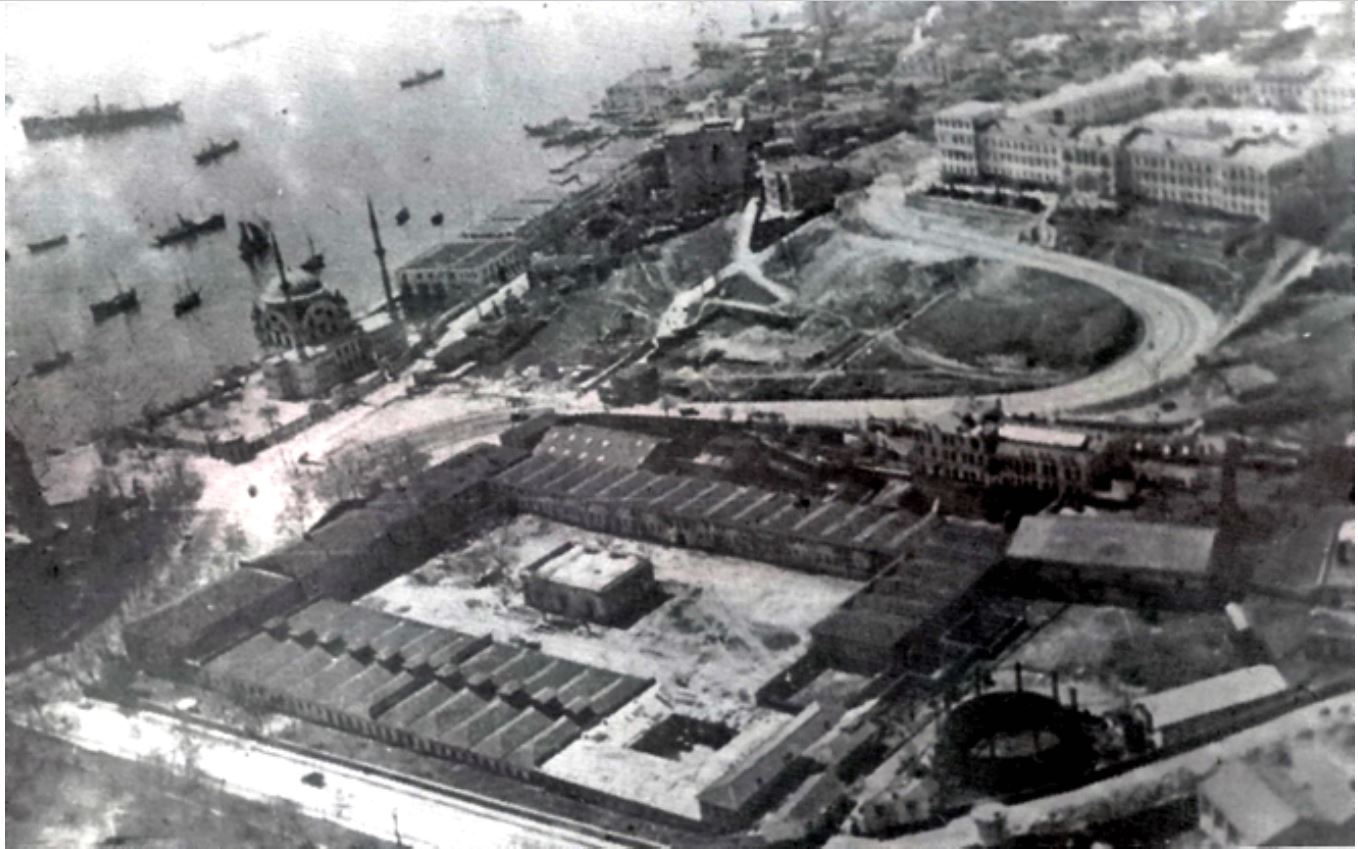
Gümüşsuyu Barracks and Dolmabahçe in the early 20th century.
In 1909, the Gümüşsuyu Barracks was damaged by a fire caused by the carelessness of soldiers serving with the map officers. Despite the efforts of the fire brigade, the delayed extinguishing of the fire resulted in significant damage.
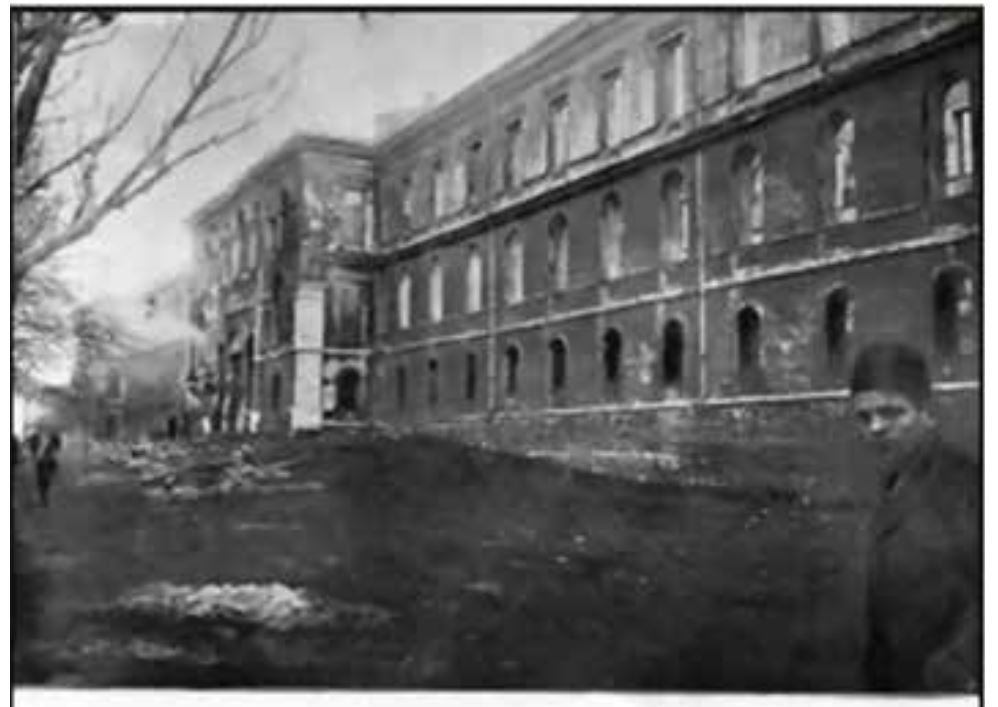
Gümüşsuyu Barracks after the fire in 1909.
Transition of Gümüşsuyu Barracks to Engineering Education
The first civilian engineering school, founded in 1884 under the name Hendese-i Mülkiye Mektebi, was affiliated with the Mühendishane-i Berri-i Hümayun and began its education at the Mühendishane in Halıcıoğlu. However, due to conflicts between military and civilian administrators, it separated from Mühendishane-i Berri-i Hümayun and, in 1909, adopted the name Mühendis Mekteb-i Âlîsi. It was then connected to the Ministry of Public Works (Nafia Nezareti) and relocated to the Faik Paşa Mansion in Tophane. Before ultimately moving to Gümüşsuyu Barracks, the engineering school had to relocate to seven different buildings, including Notre Dame de Sion and Harbiye Mektebi, due to reasons such as a typhus outbreak, World War I, and occupation.
Initially, on November 28, 1918, Gümüşsuyu Barracks was allocated to the Mühendis Mektebi by the Sultan of the time, Vahdettin. The equipment for the physics and chemistry laboratories was stored in the mosque in the middle courtyard of Gümüşsuyu Barracks. Unfortunately, a week later, before the students could settle in, the British occupied the building and started using it as a hospital. For a while, the Mühendis Mektebi, having left some of its belongings in the mosque in the middle courtyard, moved back to its old building in Halıcıoğlu. However, after the occupation of Istanbul, the building was allocated to the British forces, and the school was once again left without a place. Meanwhile, the Gümüşsuyu Barracks, used as a hospital, suffered another fire in April 1920, which completely destroyed the southern wing facing Gümüşsuyu Street.
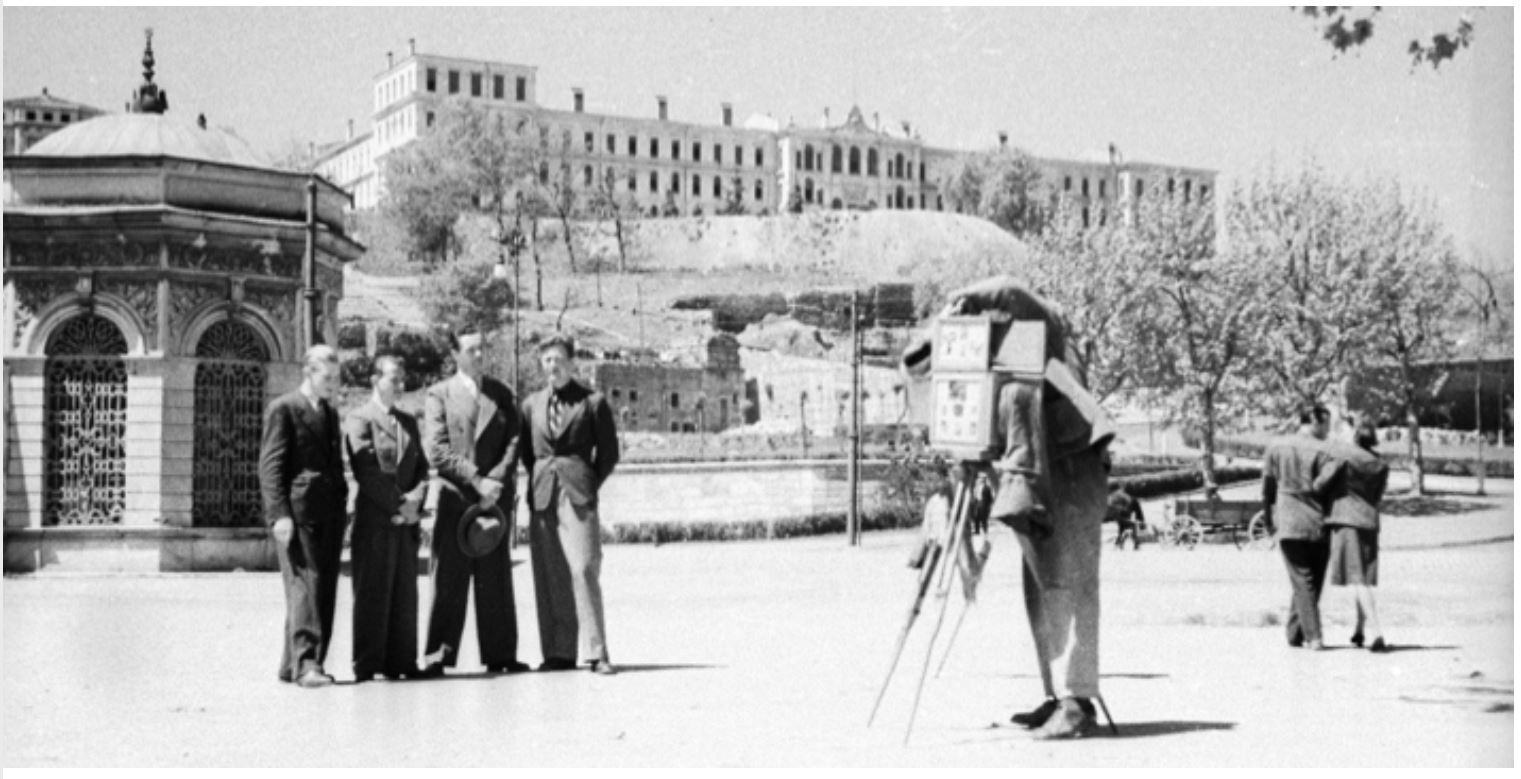
The view of the Gümüşsuyu Building from Dolmabahçe.
After the education in unsuitable buildings where classes were held in dormitories and the dining hall, the issue of relocating the School of Engineering to Gümüşsuyu Barracks was finally brought up in 1923. Following the War of Independence and the liberation of Istanbul, on March 12, 1923, the then Minister of Foreign Affairs, İsmet (İnönü) Pasha, requested from British General Harrington the evacuation of the Gümüşsuyu Barracks. In September 1923, it was decided that Gümüşsuyu Barracks would be used by both the School of Engineering and the Conductor School due to the urgent need of both schools. In 1937, the Conductor School, which had become a Technical School and was moved to Yıldız, would later be renamed Yıldız Technical University in 1992. On October 20, 1923, the School of Engineering, which had been relocated to Gümüşsuyu Barracks, started its classes.
However, the building, which had been handed over in a ruined state by the British, underwent repairs and renovation for several years. Details of the building's renovation process are provided in the research book titled "Yüksek Mühendis Okulu" (The Higher Engineering School) as follows [1]: “The southern part of the building's Sea façade (the area where the current Faculty of Mechanical Engineering secretary’s office is located and beyond) had been extensively renovated and rebuilt during Fikri Bey's first directorship. The auctioned Conference Hall and its continuation were also completed during Suphi Bey’s Rectorship. A significant portion of the walls surrounding the building and garden were rebuilt, while other parts were repaired. The garden in front of the building, facing Dolmabahçe, was arranged. After Fikri Bey, Suphi Tanıg was appointed as the director by the Ministry of Public Works on June 1, 1935.
At this time, it was decided to build a separate dormitory for the sole use of education and laboratory purposes, and the old cavalry barracks, which is now the dormitory building, was turned into a dormitory, providing excellent accommodation, rest, and dining facilities for 300 students. The parts of the Gümüşsuyu building that were used as dormitories and dining halls were dedicated to teaching. The wing of the building facing Gümüşsuyu Street was rebuilt. With these new facilities, the number of students increased, and laboratories were expanded. The restoration and expansion of the school, which had started in earlier years, continued rapidly. Of the four sections of the Gümüşsuyu building, three had already been renovated and constructed during Fikri and Suphi Bey’s time. The part facing the current Philips buildings on the western side of the Technical School was completely demolished and rebuilt with four floors.
The lower floors were allocated to printing presses, laboratories, and the upper floors were used for the library and some teaching staff. As the number of students increased, some classroom partitions were removed to expand the space. The previously small Physics and Chemistry laboratories, which could only accommodate 30 students, were expanded to twice their size. A large amphitheater was also built. The lower section of the old amphitheater was repaired and turned into a Communication laboratory. A Machine Workshop was also established for student internships. During this period, Electrical and Mechanical branches were created in the school. In addition, the departments of Aircraft Engineering and Naval Architecture were introduced.” With the law accepted on May 24, 1928, the School of Engineering, originally established as Mühendis Mekteb-i Alisi, was transformed into the Higher Engineering School, and the Gümüşsuyu Building was handed over to the institution.
During World War II, the Higher Engineering School, which expanded its staff with faculty members from abroad, has been responsible for training the country’s distinguished technical personnel since it graduated its first students in 1931. Initially located in Gümüşsuyu Barracks, the school grew with the addition of the Taşkışla and Maçka Arsenal buildings, and in 1944, it became Istanbul Technical University. After the law passed on July 20, 1944, ending the directorship of Ord. Prof. Osman Tevfik Taylan, he was appointed as the first Rector of the newly established Technical University.
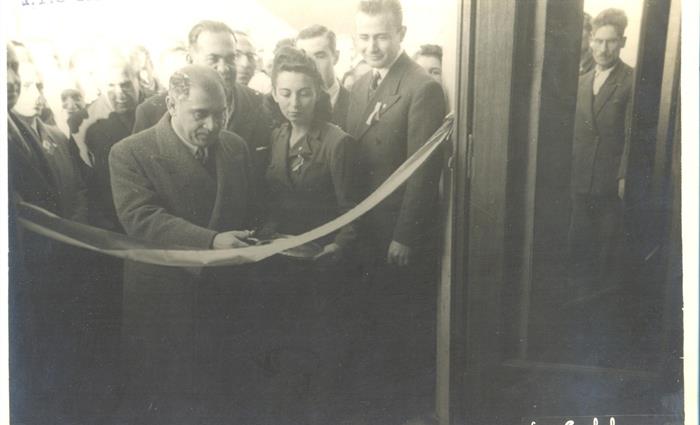
Photo from the year 1944, when Hasan Ali Yücel, the Minister of National Education of the time, cut the ribbon at the opening of Istanbul Technical University (ITU).
The Gümüşsuyu building, originally constructed for use as a military barracks, underwent many changes when transformed into an educational institution; it lost its original structure with the removal of the bathhouse and cavalry stables, and the addition of extra floors. The Meeting Room located in the Machine Faculty of the Gümüşsuyu building has been a valuable space that has hosted meetings of Rectors and Deans, both during its use as the Rectorate and afterwards. It has undergone several renovations and restorations throughout different periods, preserving its historical essence, and has become a valuable asset for our university. It is currently used for Dean and Rector meetings with a capacity of 17 people.
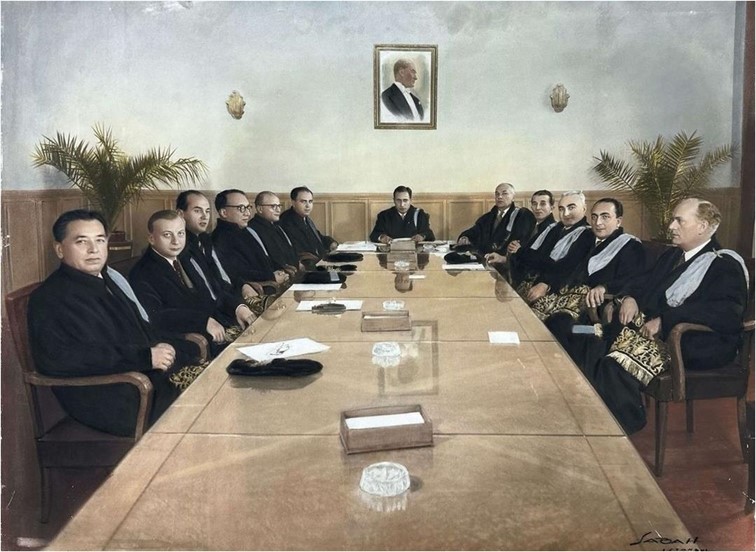
The photo above is from the 1955 meeting of the Faculty of Mechanical Engineering Professors' Board. From left to right (clockwise):
Prof. Dr. Fahri Terzioğlu (Aerospace),
Prof. Dr. Fikret Narter (Mechanical),
Prof. Dr. Kamuran Görgün (Mechanical),
Prof. Dr. Ratip Berker (Founding Dean),
Prof. Dr. Hilmi İleri (Mechanical),
Assoc. Prof. Dr. Mesut Savcı (Naval),
Prof. Dr. Hikmet Binark (Dean),
Assoc. Prof. Dr. Selim Palavan (Mechanical),
Prof. Dr. Muzaffer Sağışman (Mechanical),
Prof. Dr. Ata Nutku (Naval),
Prof. Dr. Bekir Dizioğlu (Mechanical),
Prof. Dr. François Duscio (Mechanical).
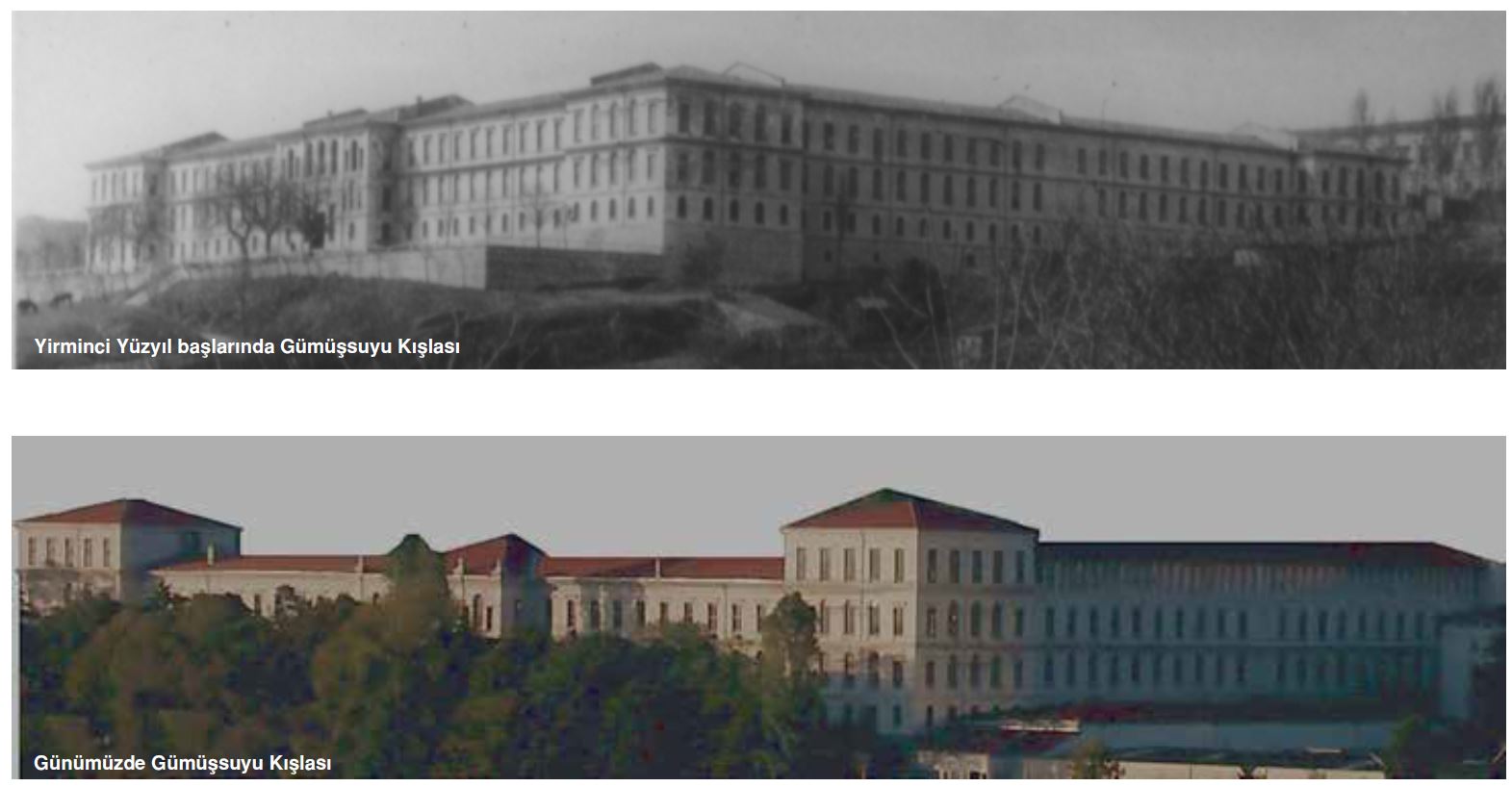
The gradual transformation of the Gümüşsuyu Campus.
[1] Uluçay Ç., Kartekin E. (1958). Yüksek Mühendis Okulu-Yüksek Mühendis ve Yüksek Mimar Yetiştiren Müesseselerin Tarihi, Berksoy Printing House, Istanbul.